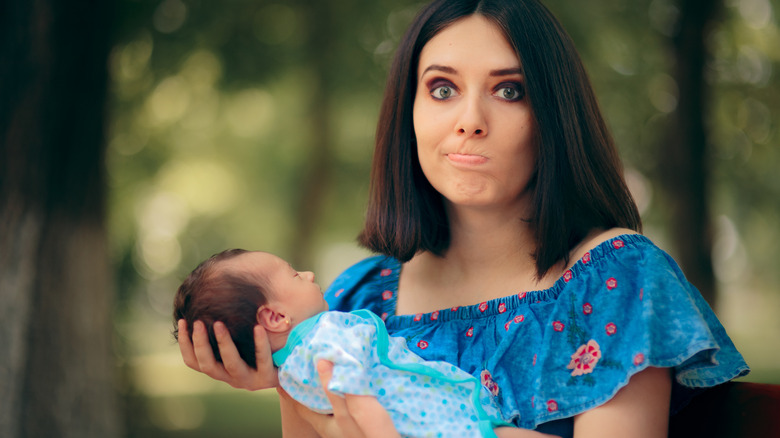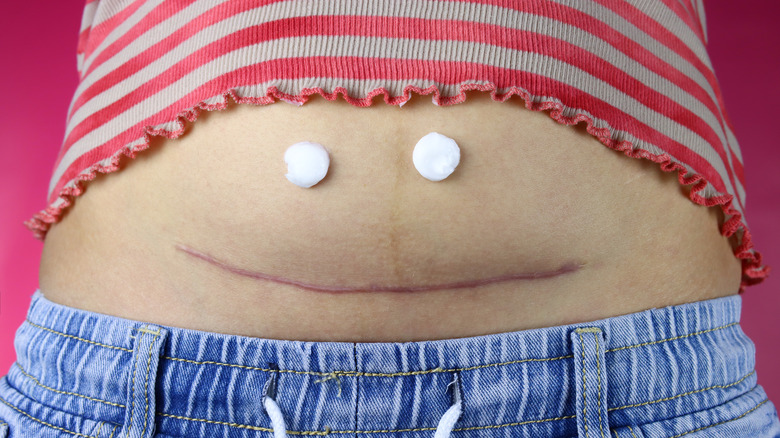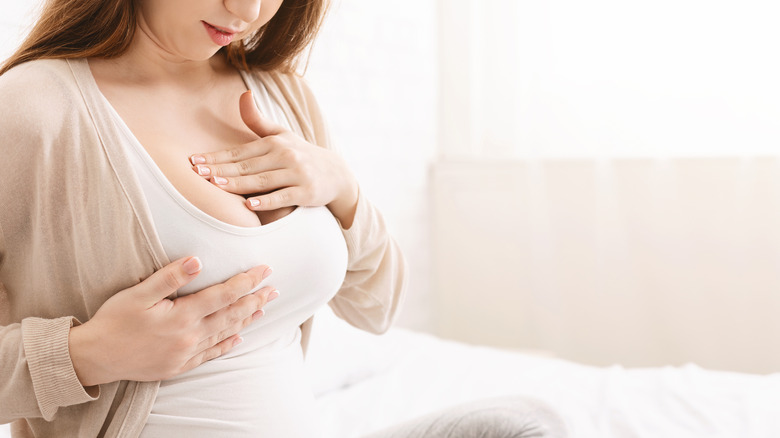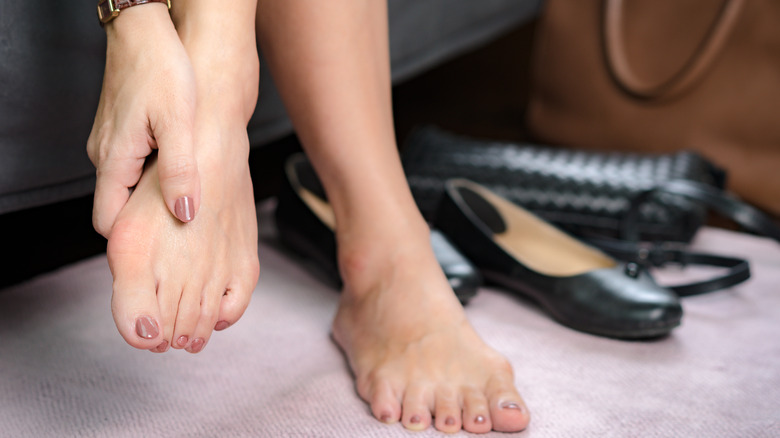What Body Parts Change The Most After Giving Birth?
Wondering what your body will look like after giving birth? Be prepared to notice changes in your breasts, skin appearance, belly shape, hips, and shoe size. Most women also experience vaginal changes, says Live Science. Some may develop pelvic floor issues, stretch marks, or varicose veins. On the positive side, your hair will look amazing!
Some of these changes are temporary, while others will last a lifetime. Your belly, for example, may look completely different after childbirth. For some women, it can take years to lose the baby pooch (not that they have to, of course!) and fix diastasis recti, which occurs when there is an abnormal distance between the stomach muscles after pregnancy, resulting in a pouch or bulge on the stomach, per The American College of Obstetricians and Gynecologists. Breast and vaginal discharge, urinary incontinence, constipation, and other postpartum changes can last anywhere between a few days to several weeks, according to the Cleveland Clinic.
Pregnancy and childbirth affect every woman differently. While it's possible to reduce the risk of stretch marks or excess weight gain, some changes are inevitable. "Like mountain climbing or scuba diving, it's hard to know how your body will cope until you experience it. Much depends on how tired you were at the end of your pregnancy, whether you are lacking in iron or other nutrients, and what sort of childbirth you went through," American author Sylvia Brown told Verywell Family. So, what body parts will change the most? Keep scrolling to find out.
Your belly will change its size and shape after childbirth
One of the first things you'll notice after giving birth is that your belly changed in size and shape. A pouch, stretch marks, loose skin, and diastasis recti are all common in a postpartum body. Many women also develop a dark, vertical line called linea nigra, which appears on the abdomen. As the American Pregnancy Association notes, this dark line may be due to hormonal changes and usually fades away shortly after childbirth.
Note that your tummy won't return to its normal size immediately after delivery. This process takes place over six to 10 weeks as the uterus shrinks back down, per the Ohio State University Wexner Medical Center. Strenuous workouts can slow down healing and worsen after-birth complications, such as pelvic organic prolapse, which happens when the pelvic muscles can no longer support all the organs it holds, such as the bladder, rectum, and uterus, per the National Association for Continence. That's why it's important to gradually ease back into an exercise routine and avoid doing too much, too soon. The American College of Obstetricians and Gynecologists recommends aiming for 20 to 30 minutes of exercise per day and focusing on the major muscle groups after delivering a child.
Your stomach area isn't the only part of the body that changes a lot after a pregnancy. A mother might also notice a huge change in her breasts.
Your breasts might become smaller or larger following birth
The hormonal changes that occur during pregnancy can affect breast size and shape. About one-third of women develop smaller breasts after pregnancy and childbirth, Dr. Yvonne Butler Tobah told USA Today in 2017. Another third of new mothers see an increase in breast size, while others don't experience any changes.
Your breasts may also become sore, hard, and engorged immediately after childbirth. These symptoms are perfectly normal and should subside within three to four days, according to Parents.com. Later, they may begin to sag and leak. "After you give birth and stop breastfeeding ... that can leave your breasts looking not only saggy, as most women expect, but smaller as well," Dr. Hope Ricciotti told WebMD.
Breast sagging tends to be common among women who are overweight or obese or had a larger bra size before getting pregnant. Having multiple pregnancies may cause your breasts to sag, too. Cigarette smoking can contribute to this problem as well, says WebMD. Note that your nipples and areolas could become darker during pregnancy — and stay that way after you give birth.
While some moms may need to shop for a new bra after giving birth, others may need to look for new shoes.
You might need to go shoe shopping after child birth
Don't be surprised if your shoes don't fit anymore after childbirth. "I've had 3 kids, and my feet grew with each kid. I used to wear 7.5 to 8 — now I'm 8.5 to 9," a woman said in an interview with The Cut. Another one claims that her left foot went up half a size after pregnancy. Others noticed that their feet got smaller. Again, these changes are completely normal. "Yes, a woman's feet swell during pregnancy. But after her baby is born, she may have a permanently different shoe size," Dr. Hope Ricciotti explained to WebMD.
Some women may also develop varicose veins on their feet and legs. Blood volume increases by up to 20% during pregnancy, according to Penn Medicine. As a result, your body's vascular system needs to work harder to pump blood through the veins, causing them to dilate. This affects about half of all pregnant women and may persist after childbirth. Simple things, such as wearing compression stockings and avoiding prolonged standing, may help reduce varicose veins and prevent them from getting worse. Sometimes, varicose veins are accompanied by pain and swelling. If that's your case, see a vascular doctor to rule out peripheral artery disease and other complications.
Of course, pregnancy and childbirth have different effects on women, but if you're wondering how your body may react to pregnancy, these side effects are a common starting point.



